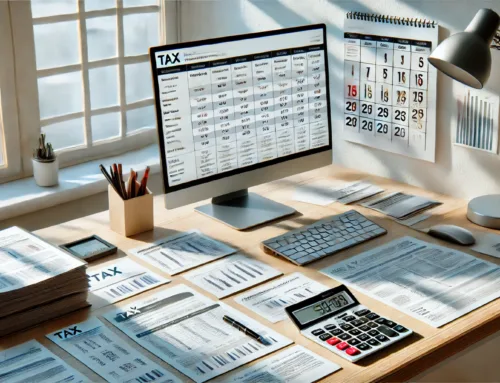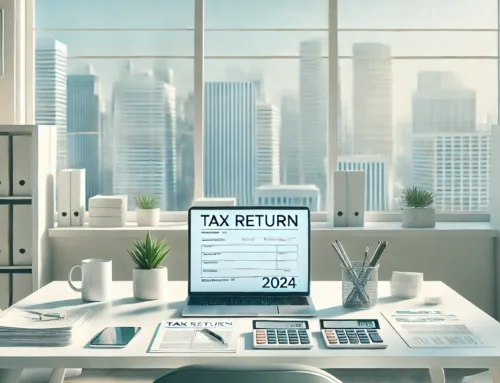Navigating the complexities of business taxation can be daunting for Australian business owners. Recent changes in tax legislation have introduced new opportunities for tax savings, but understanding these can be challenging. The Instant Asset Write Off scheme, extended in the Federal Budget until 30 June 2023, offers a solution. This program allows businesses to immediately deduct the full cost of eligible assets in the financial year of purchase, providing significant tax relief. This guide aims to demystify the Instant Asset Write Off, exploring its benefits, eligibility criteria, and how to claim it effectively for your business
Introduction to Instant Asset Write-Off
The Instant Asset Write-Off is a tax incentive that allows Australian small businesses to immediately deduct the full cost of eligible assets purchased for business use. This write-off aims to encourage businesses to invest in new assets, thereby stimulating economic growth and enhancing productivity. The purpose is to provide immediate cash flow benefits to businesses, enabling them to reduce their taxable income and reinvest in their operations.
Overview of Recent Changes in Federal Budget
The Australian Federal Budget has seen several changes to the Instant Asset Write Off scheme over the years. As of the 2020-2021 financial year, the government introduced temporary full expensing, allowing businesses to write off the full cost of eligible new assets regardless of the cost, until 30 June 2023. This measure was introduced to further stimulate business investment and economic recovery in response to the COVID-19 pandemic.
Eligibility Criteria for Instant Asset Write-Off
Defining a Small Business
For the Instant Asset Write-Off, a small business is typically defined as one with an aggregated annual turnover of less than $10 million. However, the temporary full expensing measure extends the eligibility to businesses with a turnover of up to $5 billion.
Asset Eligibility and Thresholds
To be eligible for the write-off, assets must be used or installed in the income year the write-off is claimed. The threshold for the Instant Asset Write-Off has varied over time, but as of the 2020-2021 financial year, there is no upper limit for the cost of eligible assets under temporary full expensing. Previously, the threshold was set at different levels, such as $30,000 or $150,000, depending on the financial year.
Temporary Full Expensing and Its Relation to Instant Asset Write-Off
Temporary full expensing extends the Instant Asset Write Off scheme, introduced in the 2020-2021 Federal Budget. It allows businesses to immediately deduct the full cost of eligible new and second-hand assets, with no threshold limit, for assets acquired from 6 October 2020 and first used or installed ready for use by 30 June 2023. This bill provides significant tax relief and encourages businesses to invest in new assets to boost the economy.
Claiming the Instant Asset Write Off
Steps to Claim the Write Off
- To claim small businesses must first ensure they meet the eligibility criteria, including having an aggregated annual turnover of less than $10 million.
- The asset must be purchased and used (or installed ready for use) for business purposes between the specified dates (e.g., between 1 July 2023 and 30 June 2024).
- When filing the tax return, the business should claim the immediate deduction in the same income year the asset was first used or installed.
- It’s important to keep track of the purchase date and the asset’s use to ensure compliance with the ATO’s requirements.
Documentation and Record-Keeping Requirements
Proper documentation is crucial for claiming the Instant Asset Write Off. Businesses should retain invoices, receipts, and bank statements that detail the purchase of the asset. Additionally, records should demonstrate the asset’s use in the business and the date it was first used or installed ready for use. These documents are essential for substantiating the claim if the ATO requests evidence during an audit. Maintaining organized records can also streamline the process of claiming the write-off on the tax return.
Common Mistakes to Avoid When Claiming
When claiming the Instant Asset Write Off, businesses should be mindful of common pitfalls. One mistake is claiming the write-off for assets that are not eligible or exceed the threshold. Another error is not having the asset first used or installed ready for use within the specified timeframe. Misunderstanding the turnover threshold can also lead to incorrect claims. Lastly, inadequate record-keeping can result in difficulties substantiating the claim if audited. To avoid these mistakes, businesses should carefully analyze eligibility criteria and keep detailed records of their asset purchases and usage.
Impact on Depreciation and Taxation
How Instant Asset Write-Off Affects Depreciation Deduction
The Instant Asset Write Off scheme allows small businesses to immediately deduct the full cost of eligible assets. This means that the cost of an asset is deducted in the year it is first used or installed, rather than being depreciated over several years. This can lead to a significant reduction in taxable income for the financial year, providing an immediate cash flow boost for businesses.
Calculating the Tax Benefits
You can calculate the tax benefit of the Instant Asset Write-Off as follows:
Tax Benefit = (Cost of Asset) x (Tax Rate)
For example, if a small business with a tax rate of 27.5% purchases an asset costing $10,000, the tax benefit would be:
Tax Benefit = $10,000 x 27.5% = $2,750
This means that the business would reduce its taxable income by $10,000, resulting in a tax saving of $2,750.
Interaction with Other Tax Deductions and Incentives
- If a business opts for the Instant Asset Write-Off, it cannot also claim depreciation deductions for the same asset under the simplified depreciation rules.
- The threshold for the Instant Asset Write-Off has been temporarily increased in response to economic conditions, such as during the COVID-19 pandemic.
- Businesses can use the Instant Asset Write-Off in conjunction with other incentives, such as the temporary full expensing measure, to maximize their tax benefits. However, specific rules and limitations may apply, so it’s important for businesses to consult with a tax professional to understand the best approach for their situation.
Conclusion
The Instant Asset Write-Off scheme is a valuable tax incentive for Australian businesses, enabling immediate deductions for eligible asset purchases. By understanding and utilizing this scheme, businesses can enhance their cash flow and invest in growth. Have you considered how the Instant Asset Write-Off can benefit your business this financial year?
FAQs
1. What assets are eligible for the Instant Asset Write-Off?
Eligible assets include machinery, equipment, tools, IT hardware, office furniture, and motor vehicles (capped at a certain limit).
2. Is there a limit on the number of assets I can claim under the Instant Asset Write-Off?
No, there is no limit on the number of assets. Businesses can claim multiple assets as long as each asset is below the threshold.
3. Can I claim the Instant Asset write-off if I use finance to purchase the asset?
Yes, you can still claim the write-off if you use financing to purchase the asset, such as an equipment loan.
4. What is the deadline to claim the Instant Asset Write Off for the 2023-24 financial year?
Assets need to be purchased and first used or installed ready for use by 30 June 2024.
5. Are there any exclusions or limits for the Instant Asset Write Off?
Yes, there are exclusions such as expensive cars, assets located overseas, assets not used within a business, buildings, and certain primary production assets.





